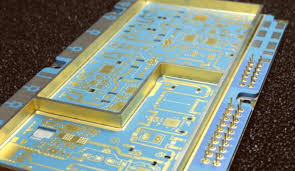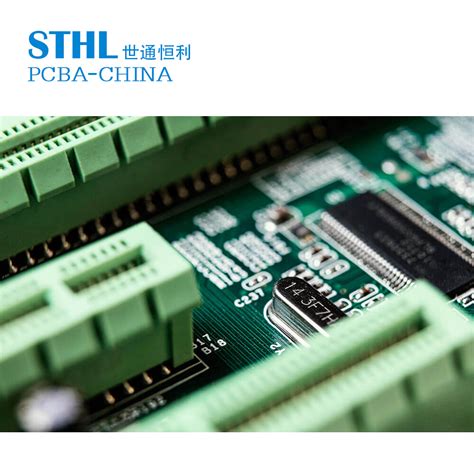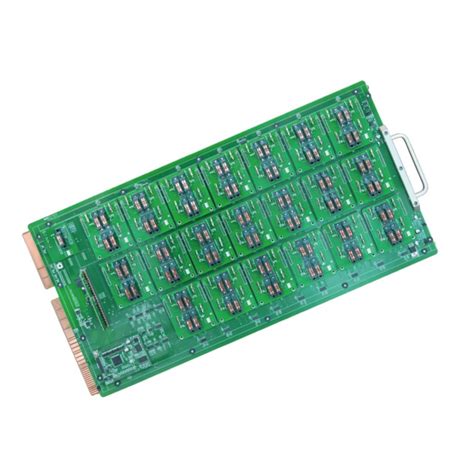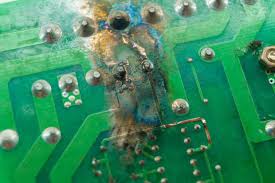Mastering Circuit Card Assembly Design: A Comprehensive Guide
Key Takeaways
In the realm of PCB assembly, mastering effective design principles is critical for ensuring the reliability and functionality of circuit cards. A solid understanding of component selection directly impacts the overall performance of a PCBA. Choosing components that are not only compatible but also suited to the specific requirements of your project can significantly enhance performance outcomes. Moreover, attention to detail in layout design serves to reduce interference and optimize signal integrity. Incorporating best practices when laying out circuit cards cannot be overstated, as it greatly influences both manufacturability and testability. Understanding manufacturing processes further provides insights into potential challenges that may arise during PCB assembly, allowing designers to proactively mitigate risks. Ultimately, thorough testing and quality assurance play a key role in delivering a reliable final product, ensuring that any common design issues can be resolved before full-scale production begins. By staying abreast of future trends in circuit card assembly design, engineers can adopt new methodologies and technologies that promise enhanced performance and efficiency in their projects.
Introduction to Circuit Card Assembly Design
In the realm of electronics, circuit card assembly (CCA) design serves as a foundational element that influences the functionality and efficiency of devices. Understanding the principles of pcb assembly is crucial for engineers and designers looking to create reliable products. This process involves integrating electronic components onto a printed circuit board (PCB) to achieve a functional assembly known as pcba. Each decision made during the design phase impacts the overall performance, durability, and manufacturability of the final product. It is essential to prioritize design simplicity and component accessibility, which can significantly lower production costs and enhance reliability.
“Clear organization within the layout leads to more efficient troubleshooting later.”
Keeping this in mind, one should emphasize trace routing, component spacing, and maximizing signal integrity—factors that help in mitigating interference and optimizing performance. Additionally, adherence to established best practices during design can facilitate smoother transitions through manufacturing processes and testing phases. By familiarizing oneself with these foundational elements, designers can better equip themselves to tackle common challenges related to circuit card assembly. Thus, establishing a solid understanding of CCA design is imperative for anyone involved in electronics development.
Fundamental Design Principles for Circuit Cards
When diving into the realm of pcb assembly, understanding the fundamental design principles is paramount for achieving seamless performance in your pcba projects. The foundation of any successful circuit card assembly lies in its initial design, which should prioritize functionality, reliability, and manufacturability. Key principles to consider include proper layer stack-up configurations, impedance matching, and effective thermal management.
Table 1: Key Design Principles for Circuit Cards
| Principle | Description |
|---|---|
| Layer Stack-up | Defines the physical arrangement of the circuit layers, essential for signal integrity. |
| Impedance Matching | Ensures that signal reflections are minimized by matching the characteristic impedance. |
| Thermal Management | Involves designing for effective heat dissipation to protect component performance and longevity. |
Moreover, component placement is crucial; components should be positioned to minimize trace lengths while considering electromagnetic interference (EMI). The spacing between components needs to accommodate thermal expansion as well as ensure accessibility for soldering during the pcb assembly process. Design tools such as simulation software can be leveraged during this stage to predict performance outcomes and identify potential issues before manufacturing begins.
By weaving these fundamental design principles into your circuit card assembly design, you set a robust framework that promotes optimal functionality and durability of your final product. Additionally, ensuring compliance with industry standards during this phase not only enhances reliability but also streamlines the subsequent stages of component selection and manufacturing processes in your overall pcba workflow.
Selecting Components for Optimal Performance
Selecting the right components is crucial for achieving optimal performance in pcb assembly or pcba. The decision-making process should start with a clear understanding of the requirements and specifications of the circuit card. Key factors to consider include the operating environment, electrical specifications, physical dimensions, and thermal management. The components selected should be compatible with one another and support the overall functionality of the design. It is essential to evaluate their electrical characteristics, such as voltage ratings and current capacities, to avoid potential failures.
Moreover, materials play a significant role in influencing both performance and longevity. For instance, selecting high-quality capacitors and resistors can enhance reliability in demanding applications. Packaging type also matters; surface-mount technology (SMT) versus through-hole components may dictate how a circuit functions when subjected to varying stresses during operation. In pcb assembly, it’s also vital to consider how easy it will be to source these components from suppliers while maintaining a balance between cost-effectiveness and quality.
In addition, understanding component footprints is crucial in ensuring that they fit correctly on the design layout without causing issues during manufacturing or assembly processes. By prioritizing component selection aligned with these guidelines, designers can create resilient circuit boards that perform optimally in their intended applications while minimizing costly errors in pcb assembly procedures.
Best Practices in Circuit Card Layout
Effective circuit card layout is pivotal in achieving a successful pcb assembly that ensures high performance and reliability. When designing the layout for a pcba, it’s crucial to prioritize the arrangement of components on the circuit board. Start by maintaining a clear hierarchy that allows for logical flow and minimizes interference. Keeping signal paths as short as possible reduces inductance and improves signal integrity, while ensuring that power and ground planes are properly managed enhances overall performance. Moreover, consider the thermal management of components; placing heat-sensitive parts away from heat-generating components can significantly extend the lifespan of your pcba. Additionally, implementing careful spacing between traces helps prevent electromagnetic interference, which is essential for maintaining signal quality. It’s also advisable to utilize a mix of surface-mount and through-hole technologies where appropriate, maximizing space utilization without compromising on mechanical strength. By adopting these best practices in your circuit card layout, you ensure that your designs facilitate easier assembly and enhance the reliability of the final product.
Understanding Manufacturing Processes
An essential aspect of pcb assembly is understanding the manufacturing processes that bring circuit card designs to life. The journey from a conceptual design to a fully functional PCBA encompasses a variety of critical stages. Initially, the process begins with the preparation of the printed circuit board, which involves cleaning and layering materials that facilitate electrical connections. Following this, proper soldering techniques are employed to ensure that components are securely attached. Both manual and automated methods can be utilized, with surface mount technology being particularly prevalent in modern pcb assembly operations. Quality assurance checks at this stage are vital; any defects could lead to malfunction down the road. After soldering, the assembled boards are subjected to testing procedures that identify any issues before mass production commences. This phase may include functional tests, visual inspections, and in some cases, X-ray imaging for hidden solder joint defects. Embracing a comprehensive understanding of these manufacturing processes contributes significantly to achieving optimal performance in circuit card design and ensures that the final PCBA meets the outlined specifications and standards required for various applications.
Testing and Quality Assurance in Assembly
In the realm of pcb assembly, rigorous testing and quality assurance are paramount to ensuring the reliability and functionality of the final product. The process begins with the verification of component placement and soldering quality during the pcba process. Automated Optical Inspection (AOI) is commonly employed to identify defects such as misaligned components or insufficient solder, which can compromise performance. Additionally, functional testing is critical to ascertain that all components operate as intended, simulating real-world scenarios in which the circuit card will be utilized.
Implementing robust quality control measures not only helps in detecting problems early but also in maintaining a streamlined production process. It is essential to establish a feedback loop where test results inform future designs, thereby enhancing overall design reliability and efficiency. Emphasizing quality assurance throughout all stages of circuit card assembly fosters a proactive approach to manufacturing, contributing to superior circuit card performance and customer satisfaction. With evolving technologies, incorporating advanced testing methodologies such as X-ray inspection for complex solder joints ensures that pcba achieves the highest standards of quality, ultimately leading to a more reliable product in the competitive electronics market.
Troubleshooting Common Design Issues
In the realm of circuit card assembly design, addressing issues that arise during development is crucial for achieving high performance in your pcb assembly projects. Common design challenges include signal integrity problems, excessive electromagnetic interference, and thermal management concerns. Signal integrity is often compromised by improper trace routing or insufficient grounding, which can lead to data loss or corruption in pcba applications. Employing simulation tools early in the design phase can help identify potential signal issues, allowing engineers to make necessary adjustments before actual production. Additionally, managing electromagnetic interference requires careful placement of components and thoughtful use of shielding techniques to protect sensitive parts of the circuit from external noise. Thermal management is another essential consideration; inadequate heat dissipation can cause components to operate outside their specifications, potentially leading to premature failure. Utilizing thermal simulation tools can assist in optimizing layouts for effective heat distribution and ensuring that components maintain safe operating temperatures during their lifespan. By understanding these common problems and implementing best practices, designers can enhance the reliability and performance of their pcb assemblies, ultimately paving the way for successful project outcomes.
Future Trends in Circuit Card Assembly Design
As the landscape of technology continues to evolve, the field of pcb assembly is experiencing significant transformations that influence how devices are designed and manufactured. One of the predominant trends is the increasing demand for smaller, more efficient circuit cards, leading to a surge in the use of advanced materials that enhance performance while reducing size. The integration of pcba with flexible substrates not only allows for innovative shapes but also contributes to weight reduction and space optimization. Additionally, the rise of automation in assembly processes is streamlining production lines by enhancing accuracy and reducing lead times.
With the implementation of more sophisticated design software, engineers can now simulate circuit behavior more precisely, making iterative design changes faster and more efficient. Furthermore, as sustainability becomes a key focus, manufacturers are exploring eco-friendly materials and processes that reduce waste while maintaining high performance levels in pcb assembly. The use of machine learning algorithms for predictive maintenance and quality assurance is additionally gaining traction, promising enhanced reliability in finished products. Collectively, these trends suggest a future where circuit card assembly design not only meets the demands of modern technology but also paves the way for groundbreaking innovations across various industries.
Conclusion
In summary, mastering pcb assembly design is crucial for anyone involved in the field of electronics. The intricacies of circuit card assembly (often referred to as PCBA) extend beyond mere aesthetics or component placement; they encompass a comprehensive understanding of both the theoretical and practical aspects of electronic design. By applying fundamental design principles, carefully selecting components, and adhering to best practices in layout, designers can significantly enhance the performance and reliability of their circuit cards. Furthermore, understanding the manufacturing processes involved can streamline production and improve overall efficiency. As technology advances, staying abreast of future trends will be imperative for engineers and designers alike to ensure that their projects remain competitive in an ever-evolving market. Continuous learning and adaptation to these changes will empower professionals to tackle challenges head-on while delivering high-quality pcb assemblies that meet both client expectations and industry standards.
FAQs
What is circuit card assembly (CCA)?
Circuit card assembly (CCA), often referred to as pcb assembly or PCBA, is the process of soldering electronic components onto a printed circuit board (PCB) to create a functional electronic device.
Why is component selection important in PCBA?
Choosing the right components is crucial for optimal performance, reliability, and cost-effectiveness of the final product. Appropriate selection can affect the durability and functionality of the assembled circuit.
What are fundamental design principles in circuit card assembly?
Key principles include ensuring proper electrical connectivity, minimizing signal interference, and maintaining thermal efficiency. PCB layout design should also prioritize component placement to facilitate easier assembly and serviceability.
How can I improve my circuit card layout?
Utilizing standard design practices such as proper grounding techniques, maintaining short signal paths, and using suitable pad sizes can significantly enhance your layout’s effectiveness. This is essential to avoid issues during pcb assembly.
What manufacturing processes are involved in PCBA?
The primary processes include surface mount technology (SMT) for placing components on the PCB’s surface and through-hole technology for inserting components into drilled holes. Understanding these processes helps in crafting designs that are manufacturable.
How do I ensure testing and quality assurance for my circuit cards?
Implementing a rigorous testing process throughout the assembly stages ensures that any defects are identified early. Techniques such as Automated Optical Inspection (AOI), functional testing, and Burn-in tests are commonly employed.
For more information on enhancing your pcb assembly skills, please click here: Andwin PCB Assembly.







